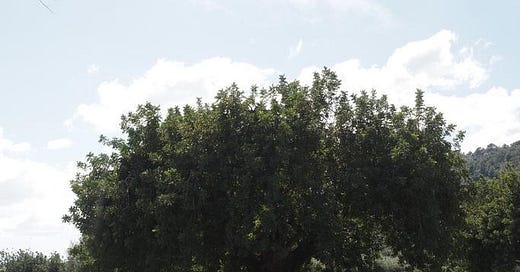“Trees are poems that the earth writes upon the sky.” –Khalil Gibran, Sand and Foam
Click here for more articles on The Chloroquine Wars.
This article was one of the first I published when I started this Substack nearly two years ago. I am republishing some of those early articles since 30,000 readers likely haven’t seen them. I am also making further progress on a book in which some of them will be reprinted—some as original and some edited.
In the late 16th century, Jesuit missionaries first observed Peruvians using an extract from the bark of the tropical Cinchona (sometimes quina-quina) tree to treat fever and chills. A short time later, use of the extract spread to Europe---to Rome in particular, where malaria was endemic due to the swamps and marshes surrounding the city. For over two centuries after, European doctors treated malaria and a handful of other ailments using this imported medicine.
Late in the 18th century, the German physician Samuel Hahnemann began studying the Cinchona-derived treatment. Dissatisfied with the state of medicine at the time, and disbelieving the conventional wisdom as to why the treatment worked, Hahnemann set out to conduct his own experiments with it. Taking the Cinchona medicine while he was healthy, Hahnemann noted that the mild side effects it produced remarkably mirrored the symptoms of the ailments it was known to treat. From this experience, Hahnemann proposed the central postulate of homeopathic medicine: like cures like.
In this and other hypothetical principles he tested, Hahnemann saw many failures, but might be favorably judged by the successes, though fewer in number. We might say that though he failed at times in applying science, he attempted scientific analysis at a time when such was still rare and the precision instruments we now take for granted were still under development (if not decades or centuries away).
In 1820, a pair of French pharmacists, Pierre Joseph Pelletier and Joseph Bienaimé Caventou, found a way to separate components of the Cinchona remedy and isolated the substances quinine, quinidine, and cinchonidine, which were further studied as quinology. From that point, the use of quinine in the treatment of malaria took root, including its use in tonic water, the fizzy drink used to deliver quinine medication.
Quinine’s success led to attempts to treat a wider and wider array of ailments. In the latter part of the nineteenth century, pharmaceutical magnate Edwin Wiley Grove used a quinine-infused syrup, including bromide, to treat an array of respiratory infections. Quinine and the analgesic antipyrine were used in combination to treat patients during the 1890 Russian flu. According to Burrows & Burrows Medical Record, intravenous quinine proved quite successful in treating the Spanish flu. Doctors continued to use quinine until the early twenty-first century, though further refinements took root during the first half of the twentieth century.
In 1934, a Bayer laboratory worker by the name of Hans Andersag managed to break quinine down into multiple substances including the quinoline compound he called Resochin. Subsequently renamed “chloroquine”, the drug eventually found use as both a prophylactic and therapeutic treatment of malaria. In 1945, further refinement led to a chemically altered version of the drug “hydroxychloroquine” which has substantially reduced toxicity and has been commonly used as an anti-malarial prophylactic and medication ever since.
Over the years, hydroxychloroquine proved its medical value in additional ways. Doctors prescribe hydroxychloroquine to treat a number auto-immune diseases such as systemic lupus erythematosus, rheumatoid arthritis, psoriatic arthritis, systemic sclerosis, connective tissue diseases, polymyositis, dermatomyositis, Sjögren syndrome, and in treating tissue inflammations associated with ankylosing spondylitis and others.
A famous infectious diseases specialist from France, Dr. Didier Raoult, devised treatments for the bacterial infections that cause Q fever and Whipple’s disease. If all that weren’t enough, hydroxychloroquine has anti-thrombotic properties, meaning it reduces blood clotting for patients suffering excessive clotting. It even inhibits autophagy (cellular self-destruction) setting up hydroxychloroquine for research as a unique cancer medication. No other medicine discovered, isolated, or engineered does all of these things.
Most importantly during the recent pandemic, hydroxychloroquine, like quinine, also demonstrates antiviral activity. In short, hydroxychloroquine is a gift from nature---one of the most broadly effective and repurposed drugs in the history of medicine. Billions of doses of hydroxychloroquine are distributed annually, and the WHO includes it in its list of essential medicines.
Sometimes it appears as if plants and animals develop in tandem, using mutually successful strategies. This is one of those times.





Up until January 2020 HCQ was one of the very few medications available over the counter without prescription in France. After that, not only was it prescription only, but doctors were instructed that it was not to be prescribed for C19, but if prescriptions were written, pharmacies were threatened if they filled the prescription. There was then a major supply problem caused by a fire at a HCQ factory. Just a few of the draconian measures taken to ensure no effective treatments were available.
Excellent article. Incidentally, I clicked the link for the WHO medicines and it’s no longer available (apparently) 😉